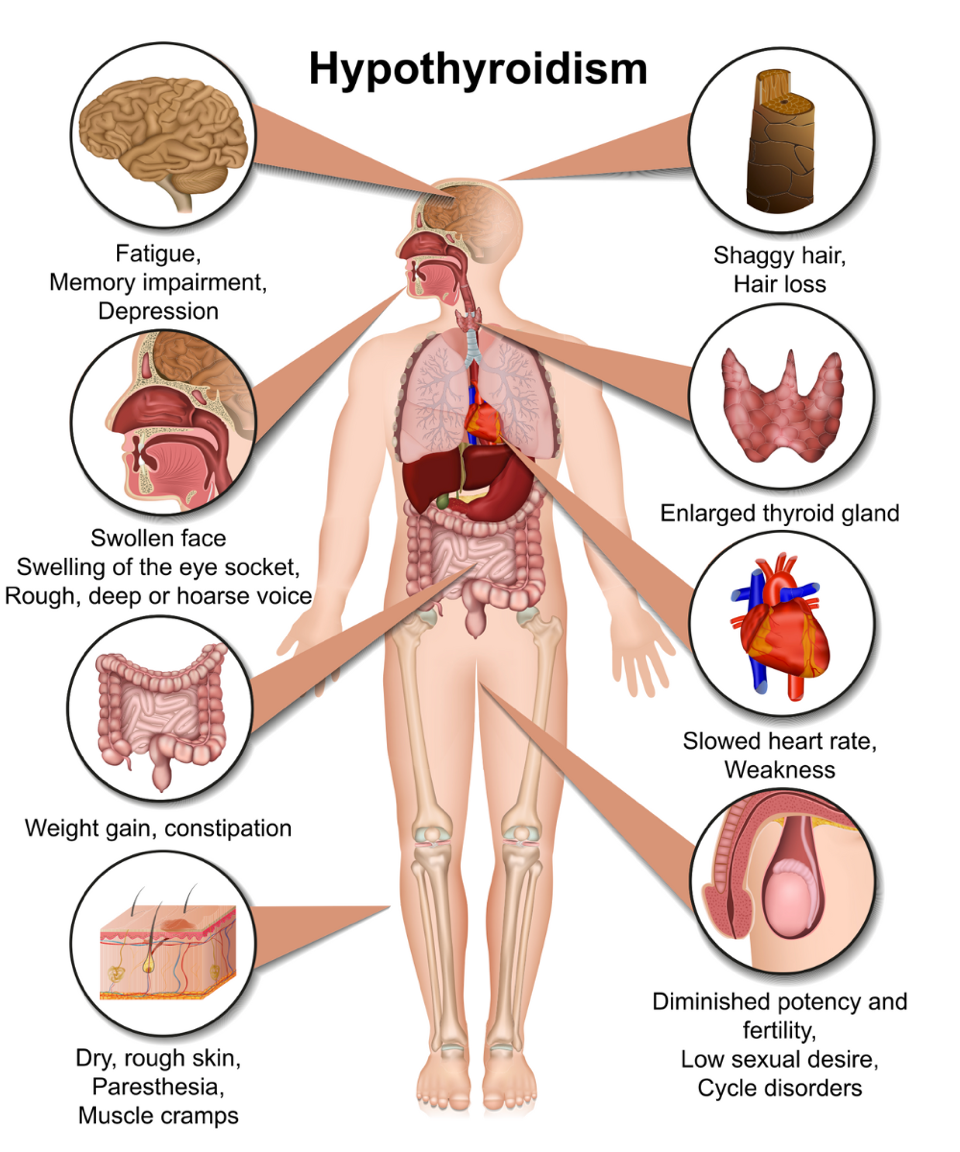What's On This Page?
ToggleYou might think normal thyroid lab results are great – but “normal” isn’t the same as optimal! Before we begin, you may want to find your latest blood test, it’s probably called a “Thyroid Profile” test – dig it up and let’s get started. Because “normal” isn’t optimal as I’ve said, and that’s crucial for you to know – therein lies the secret to your ability to get well! You MUST read what I have to share now because it’s a game-changer.
Did you know that about 20 million Americans have some form of thyroid disease, but up to 60% of them are unaware of their condition? Understanding your thyroid lab results is crucial for maintaining optimal health, especially since the thyroid plays a pivotal role in regulating metabolism, energy, and overall bodily functions.
As an advocate for thyroid health and author of a book called Thyroid Healthy, I believe it’s vital for you to know HOW to read your lab reports and understand what those numbers really mean.
 Deciphering the Code
Deciphering the Code
Navigating through your thyroid lab report can feel like deciphering a complex code. Yet, understanding this code is essential to managing your health.
Today, I am focusing on two key biomarkers: Free T4 and TSH (Thyroid-Stimulating Hormone).
According to recent studies, the target ranges of thyroid lab results (for optimal health) are narrower than the conventional “normal” ranges. The new data indicates that your Free T4 should ideally fall between 1.12 and 1.34 ng/dL, and your TSH should be between 2.56 and 3.28 mIU/L. The current normal range is much broader than that.
So why these numbers? Research indicates that individuals within these ranges have the lowest risk of heart disease and death, highlighting the importance of not just being within the normal range, but finding your optimal spot within it!
It’s a meta-analysis review that you can study yourself for more details, and the title of it is, The Optimal Healthy Ranges of Thyroid Function Defined by the Risk of Cardiovascular Disease and Mortality: Systematic Review and Individual Participant Data Meta-analysis. This data was published in October 2023 in The Lancet – Diabetes & Endocrinology.
 If you don’t want to read that, no worries, that’s what you have me here for! Here’s what I suggest you do.
If you don’t want to read that, no worries, that’s what you have me here for! Here’s what I suggest you do.
Sit Down With Your Thyroid Lab Results
Grab your latest thyroid function test results. Find the values on this that say “Free T4” and “TSH”
On a lab report, Free T4 might be listed under several different names, reflecting variations in terminology used by different laboratories or in different regions. Here are some common alternative names for Free T4:
Free Thyroxine
FT4
Free T4 Index
Thyroxine, Free
Free Thyroxine Level
Despite the variations in naming, these terms all refer to the same test measuring the free, or unbound, T4 hormone in your blood, which is available to your cells and tissues. It’s an essential lab test for evaluating thyroid function, distinguishing it from Total T4, which measures the total of both the bound and free forms thyroxine. Keep in mind that T4 is made in your body by the amino acid tyrosine and 4 molecules of iodine.
We haven’t talked another biomarker on your thyroid lab results. I’m referring to T3 hormone (aka triiodothyronine), but this is the active form of thyroid hormone that regulates metabolism and energy in the body. In contrast, T4, or thyroxine, is a precursor to T3, and while it is more abundant, it must be converted into T3 to have a physiological effect. If you can’t activate T3 (from the T4 you have), you are going to have all the symptoms of hypothyroidism.

Just FYI, T3, like T4, exists in two forms in the blood: Bound to protein and unbound (free). The majority of T3 is bound to proteins, making it inactive, as it lies in wait to become activated.
Only a small fraction of T3 is unbound, or free (Free T3), and it is this form that is biologically active and able to enter cells to exert its effects on metabolism and other bodily functions. I’ll discuss more about T3 in another blog. Today I want to focus only on these guys: Free T4 and TSH.
More on TSH Lab Results
As for TSH, there are three other possibilities for how you may see it on your lab paperwork:
Thyrotropin
Thyroid-Stimulating Hormone, Serum
Serum Thyrotropin
Despite these variations, all these terms refer to the same thing – TSH.
This biomarker is one that I always say doesn’t matter a whole lot (relative to the other biomarkers of thyroid). But it still matters to some degree in terms of what it reflects.
TSH is produced by your pituitary gland and stimulates your butterfly-shaped thyroid gland to produce thyroid hormones (T4 and T3). It’s like a loudspeaker that yells out the signal to “Make more thyroid hormone – this person doesn’t have enough!”
TSH is a biomarker that’s useful in assessing thyroid function and it’s the most common thyroid lab result you’ll find – it’s more of a screening biomarker in my opinion. It is often the first test performed when thyroid dysfunction is suspected. Unfortunately, they use it solely to track your progress, and wellness, and I think that’s a mistake.
Do your Free T4 and TSH levels fall within these target ranges? If not, it may be time to have a conversation with your healthcare provider about adjusting your medication. This isn’t about overmedication or under-treatment, it’s about fine-tuning your therapy to match your body’s requirements.
Thyroid Lab Results: Beyond Free T4 and TSH
While Free T4 and TSH are crucial markers in your thyroid lab results, they don’t tell the whole story. Other important biomarkers include:
- T3 (Triiodothyronine): Especially useful if you’re experiencing symptoms despite normal TSH and Free T4 levels.
- Thyroid antibodies: Can indicate autoimmune thyroid disease even when other tests are normal. You may have Hashimoto’s thyroiditis for example, with a perfect TSH and so-called “normal” Free T4!
- Reverse T3: Provides insight into how your body is using the T4 hormone. I wrote an entire article to feature the importance of evaluating rT3 which you can read, Measure Reverse T3 and Get Thyroid Healthy.
5 Essential Tips
To effectively interpret your thyroid lab results and take control of your well-being, consider these 5 essential tips:
- Know the Key Biomarkers and Their Optimal Ranges
Free T4 (Thyroxine): The normal range is generally 0.9 to 2.0 ng/dL, but the optimal range for many people is narrower, between 1.12 and 1.34 ng/dL. This hormone is directly involved in your metabolism and energy levels.
TSH (Thyroid-Stimulating Hormone): Though the standard range is about 0.4 to 4.0 mIU/L, the optimal range for better health outcomes is found to be between 2.56 and 3.28 mIU/L. TSH levels can indicate if your thyroid is underactive (hypothyroidism) or overactive (hyperthyroidism).
- Understand That “Normal” May Not Always Mean “Optimal”
Thyroid lab results are broad and designed to identify overt thyroid dysfunction. However, you might still experience symptoms even if your results fall within these normal ranges. The optimal ranges are narrower and more indicative of where many people feel their best.
- Look Beyond TSH and Free T4
T3 (Triiodothyronine): This hormone plays a crucial role in your metabolism and energy levels. Some people have trouble converting T4 into the active T3 hormone, which isn’t always reflected in TSH and Free T4 levels.
Thyroid Antibodies: Testing for antibodies can help identify autoimmune thyroid conditions like Hashimoto’s thyroiditis or Graves’ disease, even if other thyroid lab results are normal.
Reverse T3: This is a mirror image of T3 and can indicate how well your body is converting T4 to T3. High levels may suggest that your body is not using thyroid hormone efficiently.
- Consult with a Healthcare Professional
Interpreting thyroid lab results is complex and should involve a conversation with someone knowledgeable in thyroid health. A healthcare provider can help you understand your results in the context of your symptoms, history, and overall health.
Armed with your lab report and the knowledge I’ve imparted to you today, you’ll be better prepared to discuss your thyroid hormones more effectively with your doctor.
Whether it’s adjusting your medication or exploring additional tests, beginning a dietary supplement that helps you synthesize more thyroid hormone… whatever it is, the goal is to have a conversation with your doctor to customize your treatment.
- Monitor and Adjust as Necessary
Thyroid health can change over time, influenced by factors such as age, pregnancy, stress, and illness. Regular monitoring can help ensure that your treatment remains aligned with your current needs. Adjustments to medication or treatment strategies may be needed based on your lab results and how you feel.

Summary
By applying these tips, you can interpret your lab results. This makes you an active participant in managing your thyroid health, working together with your healthcare provider to achieve the best possible outcomes.
Understanding your thyroid lab results is a powerful tool in managing your health. The target ranges for Free T4 (1.12 – 1.34 ng/dL) and TSH (2.56 – 3.28 mIU/L) represent optimal levels for many individuals, but remember, these are guidelines. Your health is unique, and treatment should be personalized to how you feel, not a number on a piece of paper.
Knowledge is power as they say, especially when it comes to your health. By taking an active role in understanding your thyroid function and advocating for your well-being, you’re taking a significant step towards better health. I hope you enjoyed this blog, feel free to forward it to anyone who can benefit.

Suzy Cohen, has been a licensed pharmacist for over 30 years and believes the best approach to chronic illness is a combination of natural medicine and conventional. She founded her own dietary supplement company specializing in custom-formulas, some of which have patents. With a special focus on functional medicine, thyroid health and drug nutrient depletion, Suzy is the author of several related books including Thyroid Healthy, Drug Muggers, Diabetes Without Drugs, and a nationally syndicated column.



